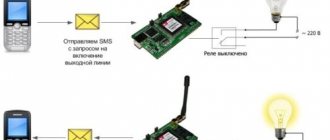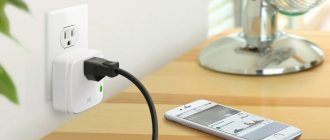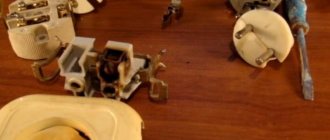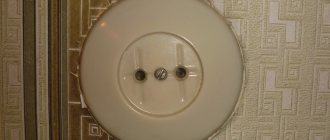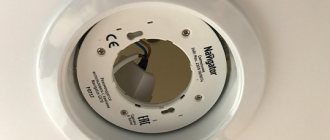What is a WiFi socket?
A smart WiFi socket is a special device that is inserted in place of the old socket and connected to the existing wiring. Then the device is used in normal mode. You can connect household appliances and other electrical consumers to it within the established limit.
Control is carried out through an application installed on a smartphone, with which you can remotely turn on and off the power. Some manufacturers offer models with advanced functionality. For example, you can find smart WiFi sockets with a temperature sensor or current consumption data on sale.
In general, it seems that wireless communications are already everywhere, starting from the usual adapters in laptops to a special option for phones called WiFi Calling.
Connecting and setting up TP-Link HS110 and TP-Link HS100
As for the setup, as it turned out, everything is simple. I've never set up smart plugs, so I didn't immediately understand what was what. I will do it in the form of step-by-step instructions. This will be more convenient and clearer.
1 First of all, you need to install the Kasa application on your smartphone or tablet. It is available for iOS and Android on the App Store and Google Play. Just type “tp-link kasa” and install the application. Through this application you can control smart sockets and other devices from TP-Link.
- How to choose a GSM socket for home with smart control? TOP 5 best models in 2022
After launching the Kasa application for the first time, it will prompt you to log into your TP-Link account, or register a new one. You can skip this step by clicking on "Skip". But in this case, you will be able to control the devices only when connected to your home Wi-Fi network (to which the outlet is connected). Therefore, I advise you to click on the “Create Account” button and register in the cloud service to manage your devices from anywhere.
You just need to provide your email and password. And then confirm your registration in a letter that will be sent to the specified email. You will be immediately authorized in the application.2 Next, we plug the smart socket into a regular socket. Press and hold the button with the gear icon for 5 seconds. The indicator will start flashing orange.
3 On your smartphone, connect to the Wi-Fi network, which the outlet will begin broadcasting. The network is not secure, without a password.
4 Go to the Kasa application and click on the “Add device” button. Next, select the type of device we want to add. In our case it is “SMART PLUG”. Click the “Next” button, “Next”, and “Next” again.
Give your outlet a name. Select an icon. You can even take a photo, or choose from an album. Next, you need to select your Wi-Fi network and specify its password so that the outlet can connect to your Wi-Fi network.
We wait a little and everything is ready. You will see your outlet in the list of devices.
If you have several sockets, then add them one by one, following the same pattern. After the setup is completed, the smart socket will stop broadcasting the Wi-Fi network.
What does a Wi-Fi outlet look like?
Structurally, WiFi sockets come in two types: overhead and built-in. In the first case, the product looks like an adapter with one connector. The device includes a casing, an indicator, an on/off button and a connector. The built-in model completely replaces the old device in the wall recess.
Unlike conventional products, a WiFi-controlled socket has a more complex design. It integrates a special module that provides remote control via a wireless network. Depending on the type, a display may be installed on the housing to provide additional information.
Why do you need a Wi-Fi socket?
The use of WiFi devices to connect electrical appliances is common in smart homes. With their help you can solve the following problems:
- turn on and off the lights in the room;
- turn on the heater or other appliances before returning home;
- configure the on/off schedule for the device of interest;
- turn on the lights remotely while on vacation;
- connect the iron with the possibility of remote control;
- automatically turn on/off equipment based on a signal from another device (for example, a motion sensor).
The use of a WiFi socket simplifies life and allows you to remotely control electrical receivers over a long distance.
Model differences
Some models interact with the IFTTT service, that is, data is synchronized to automate any process. The mobile application contains built-in commands in the software that supports the smart device.
Let's give an example. Outside the window, the temperature exceeded +86 degrees Fahrenheit, the triggered temperature sensor automatically sends a signal to turn on the outlet, and the air conditioner is connected to it, or vice versa, when it gets cold, the floor heating and heaters turn on. Or the built-in light sensors are triggered by the sun's rays and give a command to prepare morning coffee in the kitchen appliance.
How does a WiFi socket work?
The product requires a voltage of 100 to 240 Volts to operate, so it can be used at home or in an office where there is a standard household network. Output power may vary depending on model. This parameter ranges from 2 to 4 kW. This is enough to connect powerful electrical receivers.
The outlet is controlled via WiFi using a smartphone or PC with installed software. To avoid mistakes during use, you must read the instructions (included in the kit). The general connection algorithm is as follows:
- download a special application;
- find a wireless connection in your home, apartment or office;
- enter your password;
- check whether it is enabled or disabled via the app.
The glow of a special LED indicates correct configuration and readiness to perform the assigned tasks. Once you understand how a Wi-Fi outlet works, you can connect household appliances and other equipment to it. In the future, if failures occur, you can reset the settings to factory settings and program the device again.
Malfunctions
Manufacturers caution users against misuse of the device to prevent accidents. In particular, it is prohibited:
- do not comply with the temperature conditions during operation and exceed the permissible load level (parameters are indicated in the attached technical data sheet);
- direct contact with the outlet of UV rays and water;
- locate near powerful heat sources that may adversely affect the operation of the device.
The problem that arises when putting an outlet into operation is the difficulty associated with connecting to the router.
When, after performing a quick device detection operation, the LED indicator continues to indicate failure, the following steps must be taken:
Reboot the router;
- Remove and reconnect the socket to the electrical network (220V);
- On the outlet, press and hold the on/off button for 4-6 seconds;
- Log in to the application on your smartphone/tablet and launch the quick search option;
- After scanning is completed, select your home wireless wifi network;
- Now all that remains is to enter the network password for access and click “Ok” to confirm.
How to choose a Wi-Fi outlet?
The main difficulty for many buyers is choosing the right WiFi device. Experts recommend looking at the following indicators:
- Manufacturer. The products of TP-Link, Sonoff, Broadlink and others are in greatest demand.
- Maximum load power. This parameter determines how many devices can be connected to one WiFi device and not worry about its damage. For a home network, 2.5-3 kW is enough.
- Plug standard. When purchasing from foreign online stores, you need to choose models with a European connection type.
- Functional. Depending on the manufacturer, the number of options may vary. There is an active demand for WiFi sockets with a temperature sensor, the ability to track equipment operating time and electricity consumption, with overload protection and sending SMS about failures. Some devices allow you to set individual scenarios.
- Acceptable degree of protection from moisture and dust. When using the product in a damp room, it will be useful to have curtains. The latter are also necessary to protect children.
An equally important parameter of a Wi-Fi outlet is the price. The indicator directly depends on the manufacturer, power and available functions. The minimum cost is 500-600 rubles. The upper limit is about 12-15 thousand rubles per unit of production. There is one more parameter that needs to be taken into account when choosing a WiFi outlet - reviews. From the comments you can understand how reliable and easy to use the model is, and whether it is worth buying.
How to use it correctly?
After unpacking the device, you need to connect it. For example, let's look at how to connect the Sonoff model:
- register in the eWeLink cloud and download the application;
- log into the program using your personal data;
- turn on the remote or built-in socket with WiFi control (depending on the model);
- press the button and hold it until the green indicator starts blinking (three times per second);
- On your phone, click “add device”;
- select a WiFi network and enter a password;
- wait until the new device is registered on the server.
For convenience, you can set any name (for example, bedroom, living room, bathroom, etc.).
Features of work
Wi-Fi sockets are easy to use, but require knowledge of some features:
- When the power goes out, the settings are reset. They will have to be installed again.
- The time zone of the device may not coincide with the real state of affairs, so this parameter must be set independently.
- When a power failure occurs, the device automatically turns off.
- If there is no Internet connection, the device does not work. This is due to the fact that all settings are transferred to the server.
On the Internet you can find many instructions on how to make a smart Wi-Fi socket with your own hands. But this makes no sense, because assembling the structure will require knowledge and money. It's easier to buy a ready-made device. It costs a small amount, so you don’t have to skimp on this aspect.
Advantages and disadvantages
Advantages of sockets controlled via radio, GSM or Wi-Fi channels:
- reduce energy costs and allow significant savings on electricity;
- You can control several devices at once from one remote control;
- the signal that comes from the remote control transmitters spreads freely even through walls and other structures;
- connects simply, does not require reconstruction or complex installation;
- high resistance to signal interference.
Flaws:
- if walls or partitions contain reinforcement or metal structures, then the signal intensity is significantly reduced;
- “false” positives may sometimes be recorded;
- it is forbidden to use by people with installed pacemakers and other implants that operate on electricity;
- relatively high price.

